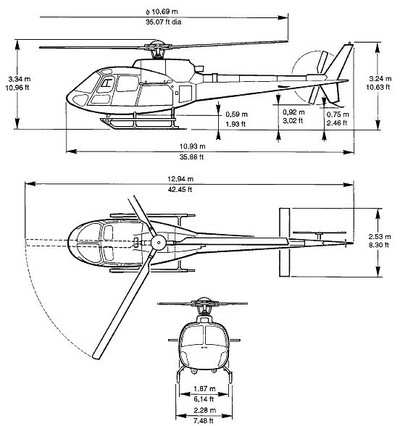News Helicopters Were On Scene Over Police Pursuit In
Phoenix
 It's a lesson drilled into the mind of any student pilot: first
and foremost, fly the aircraft. The National Transportation Safety
Board determined Wednesday that mantra wasn't followed in a 2007
midair collision over Phoenix, AZ.
It's a lesson drilled into the mind of any student pilot: first
and foremost, fly the aircraft. The National Transportation Safety
Board determined Wednesday that mantra wasn't followed in a 2007
midair collision over Phoenix, AZ.
In the Board's probable cause report on the midair involving two
electronic news gathering (ENG) helicopters, the NTSB determined
both pilots' failure to see and avoid the other helicopter led to
the accident. Contributing to that failure was the pilots'
responsibility to perform reporting and visual tracking duties to
support their station's electronic news gathering operation.
Also contributing to the accident was the lack of formal
procedures for Phoenix-area ENG pilots to follow regarding the
conduct of these operations.
As ANN reported, on July 27, 2007, two
Eurocopter AS350-B2 helicopters collided in midair in Phoenix, AZ
while covering a police pursuit. At the time of the accident, three
other news gathering helicopters, from local stations, were
covering the event, and a police helicopter was operating below the
news helicopters. Each helicopter had a pilot-reporter onboard, and
four of the five ENG helicopters had a photographer on board
videotaping the event. All four occupants in the two accident
helicopters were killed.
ENG helicopters are equipped with an on-board system with the
capability of transmitting audio and video live to a television
station. ENG pilots and helicopter police operating in their area,
are expected to communicate their position and intentions with one
another using a dedicated air-to-air frequency. However, the
accident pilots' attention was focused on the changing situation on
the ground and their broadcast.
The Safety Board's investigation revealed the last time the two
pilots coordinated their helicopters' positions or intentions to
each other was about four minutes before the collision.
Additionally, when the accident occurred, the pilots were reporting
the unfolding events on the ground, which diverted their attention
away from other tasks... such as maintaining their helicopter's
stated position and altitude and scanning the area for potential
collision hazards.
"A pilot's first and primary responsibility is to operate the
aircraft in a safe manner," said NTSB Acting Chairman Mark V.
Rosenker. "Assigning someone else, other than the flying pilot, to
perform the reporting duties in ENG operations and improved
technology to assist pilots in distinguishing between the shape of
airborne objects operating below them and the surrounding terrain
will prevent accidents like this from occurring again," he
added.
As a result of its investigation, the Safety Board made 10
recommendations to the Federal Aviation Administration, including
to require electronic news gathering operators to assign reporting
responsibilities to someone other than the flying pilot unless it
can be determined that the pilot's workload remains manageable
under all conditions.

Other recommendations to the FAA included requiring the
installation of crash-resistant recording systems, incorporating
pertinent information into an advisory circular of best practice
guidelines for ENG operations, installing a crash-resistant flight
recorder system, hosting annual ENG helicopter conferences to
discuss operational and safety issues, developing letters of
agreement for aircraft to specify minimum horizontal and vertical
separation requirements, and requiring ENG operators to use
high-visibility blade paint schemes and improved anti-collision
(strobe) lights on their aircraft.
 ANN's Daily Aero-Linx (04.13.24)
ANN's Daily Aero-Linx (04.13.24) ANN's Daily Aero-Term (04.13.24): Beyond Visual Line Of Sight (BVLOS)
ANN's Daily Aero-Term (04.13.24): Beyond Visual Line Of Sight (BVLOS) Airborne 04.09.24: SnF24!, Piper-DeltaHawk!, Fisher Update, Junkers
Airborne 04.09.24: SnF24!, Piper-DeltaHawk!, Fisher Update, Junkers Aero-News: Quote of the Day (04.14.24)
Aero-News: Quote of the Day (04.14.24) ANN's Daily Aero-Term (04.14.24): Maximum Authorized Altitude
ANN's Daily Aero-Term (04.14.24): Maximum Authorized Altitude




